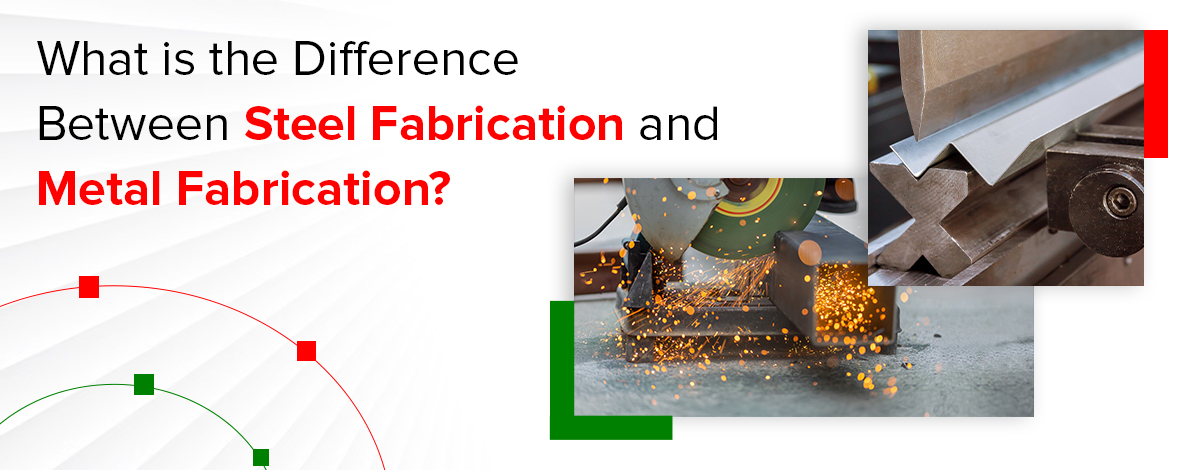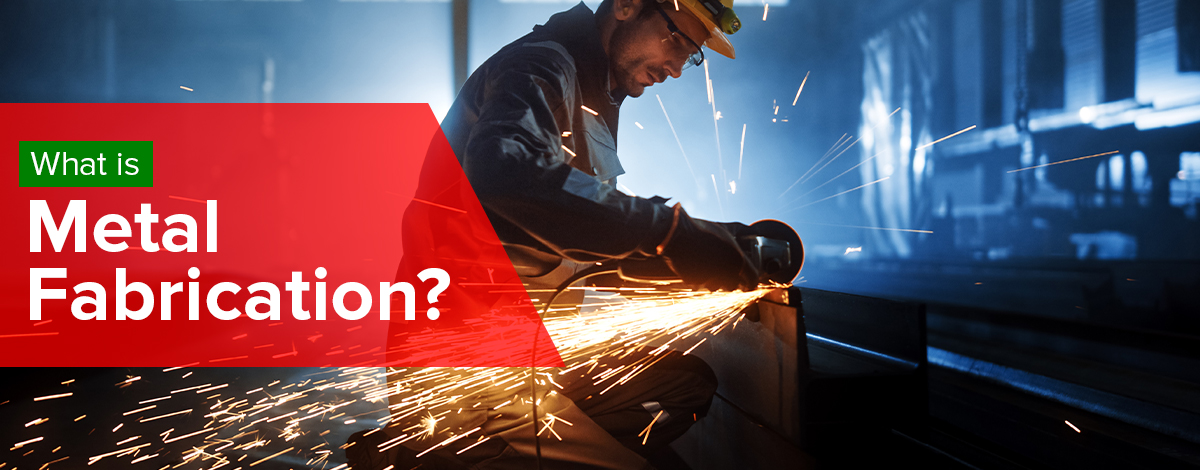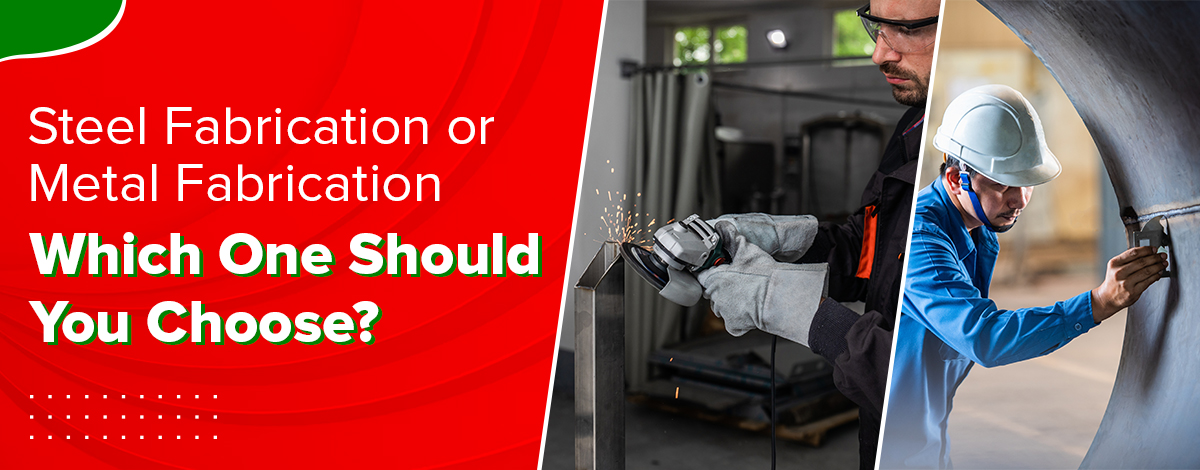What is the Difference Between Steel Fabrication and Metal Fabrication?

In industrial settings, the terms "steel fabrication" and "metal fabrication" are often used interchangeably. However, they refer to different processes within the broader field of manufacturing. Steel fabrication is a specific type of metal fabrication that primarily focuses on the use of steel. On the other hand, metal fabrication involves working with a variety of metals, such as aluminum, copper, and brass. If you're an industrialist who often deals with custom parts, manufacturing equipment, and machinery, understanding the difference between these two can help you choose the right fabrication service for your project.
In this web blog, let's understand what steel fabrication and metal fabrication are and what differentiates them.
What is Steel Fabrication?
Steel fabrication is the process of transforming raw steel materials into pre-designed shapes, parts, or structures. These are subsequently used in a wide range of industries, including construction, manufacturing, automotive, and others.
In simple words, steel fabrication involves taking basic steel materials, such as sheets or rods, and shaping them into usable forms according to specific designs or blueprints. Here's how steel fabrication works:
Design: This is the initial step that involves creating detailed blueprints to specify the project's requirements.
Cutting: The second step involves cutting steel into the required shapes using laser, plasma, or mechanical cutting methods.
Bending: Steel is bent or formed into custom shapes using machines like rolling machines or press brakes.
Welding: Cut and shaped components are welded together using MIG and TIG welding, forming larger structures.
Finishing: The final step in which steel undergoes surface treatments like painting or sandblasting. This is done to protect the material from corrosion and improve its appearance.
What is Metal Fabrication?

Metal fabrication is the process of creating metal structures, parts, or products. This involves cutting, bending, welding, and assembling raw materials into functional forms.
Metal fabrication supports a wide range of industries, including construction, manufacturing, automotive, and aerospace. Below is how basic metal fabrication works:
Design and Planning: Similar to steel fabrication, a metal fabrication project begins with detailed design or blueprints specifying the final product's requirements.
Cutting: In the cutting phase, raw metal sheets, bars, or tubes are cut into the desired shapes.
Bending: The cut metal pieces are bent or formed into specific shapes using machines or rollers.
Joining: The shaped metal parts are joined together to create complete assemblies or structures.
Finishing: Finally, the finished product undergoes processes such as grinding, painting, coating, or polishing to enhance its appearance and durability.
These steps represent the basic process. However, it is essential to note that metal fabrication involves a comprehensive range of materials and techniques compared to steel fabrication.
Listing Differences Between Steel Fabrication and Metal Fabrication
Though steel fabrication and metal fabrication share many similarities, some fundamental differences set them apart. Let's now take a look at those key differences.
Material: The primary difference between steel and metal fabrication lies in the material used. Steel fabrication focuses solely on steel to create the final product, while metal fabrication involves the use of various materials for production.
Tools and Techniques: The fabrication of steel requires specialized tools and techniques, among which MIG or TIG welding, heavy-duty press brakes, and plasma cutting represent the most essential elements. The requirements for tools in metal fabrication have become broader because different metal types need distinct processing methods.
Material Properties: Steel fabrication processes are tailored to optimize steel’s unique properties, such as high strength, weldability, and susceptibility to rust. In metal fabrication, workers must have a deeper understanding of the different properties of different metals and the techniques to work with each effectively.
Applications: Steel fabrication is commonly used in applications that require high-strength, durable, and structural components, such as construction, heavy machinery, and industrial equipment. In contrast, metal fabrication is more versatile and can be used in a broad range of applications, including automotive, HVAC systems, and aerospace.
Expertise: Steel fabrication workers require expertise in steel properties and welding techniques specific to steel. Metal fabrication workers require a broader knowledge base to work with multiple metals, each with its own handling, welding, and finishing needs.
Cost: Steel is an affordable and readily available material, which makes steel fabrication generally more cost-effective for large-scale structural projects. In contrast, metal fabrication costs more due to the use of specialty metals such as copper, titanium, or brass.
Steel Fabrication or Metal Fabrication: Which One Should You Choose?

The decision of choosing between steel and metal fabrication depends on your specific industry needs. You should consider the following to make an informed decision:
What are your material requirements?
If your project only requires the use of steel, steel fabrication might be the most efficient and cost-effective choice. However, if your project involves the use of multiple metals, you'll need a metal fabrication service.
What is the complexity of your project?
Due to its versatility, metal fabrication can benefit projects that require custom parts made from various metals, intricate designs, or unique finishes. And, steel fabrication is best for projects that require straightforward, structural work.
What is your budget?
As mentioned earlier, steel fabrication costs less than metal fabrication. Therefore, if you have a tight budget but require durable, high-quality materials for production, steel fabrication may be beneficial. However, if you opt for a metal fabrication service, be aware that it typically incurs higher costs.
What is your application?
Consider your application requirements and the environment where you will use the fabricated parts.
Bottom Line
To sum up, steel and metal fabrication serve different roles in various applications. While they may share similar processes, the material used and techniques applied can differ significantly. And, choosing the right fabrication service depends on the complexity of your project, your budget, the material, and the application.
Need Expert Fabrication Services?
Still unsure about which fabrication service is right for you? Our experts at Kear Fabrication Inc. are here to help! We specialize in delivering high-quality, tailored fabrication services to different industries across Canada. With years of expertise, advanced technology, and a skilled team, we ensure precision, durability, and excellence in each project we undertake.
Contact us today, and let us bring your project to a successful completion with the right fabrication solution.